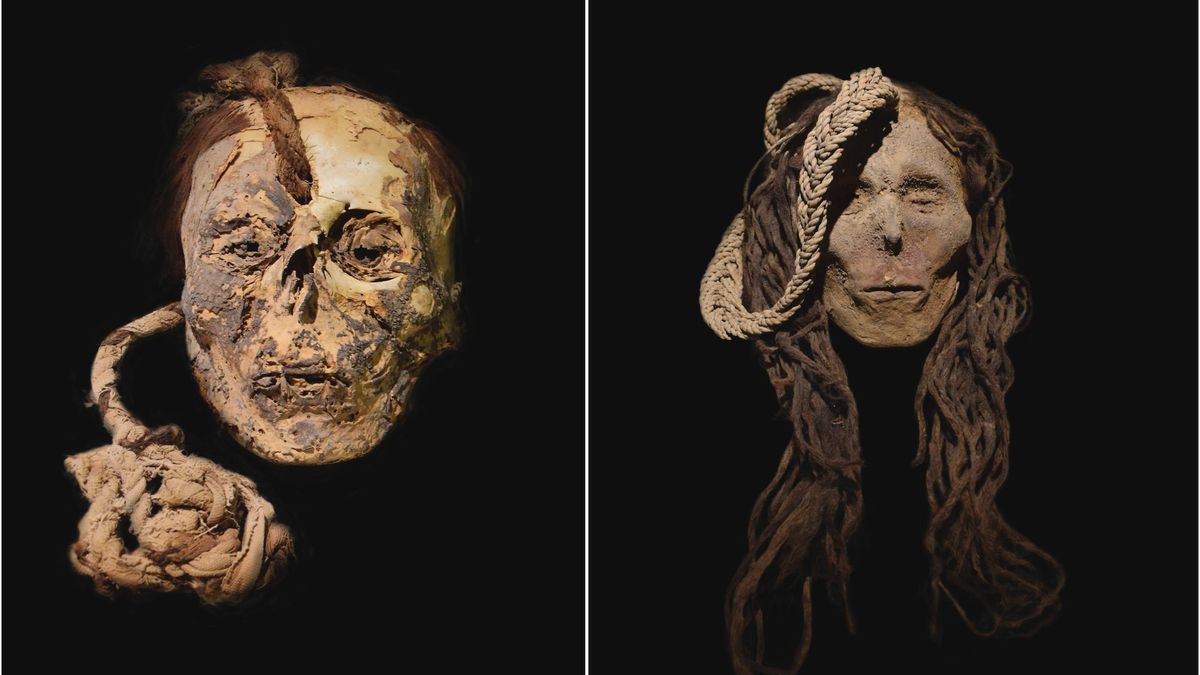Thousands of years ago, a child in Peru was sacrificed as part of an ancient ritual, his head was cut off at the neck and made into a kind of trophy. New analysis of a single hair plucked from the mummy’s skull suggests the child consumed the psychoactive cactus before being executed as part of a ceremony.
The surviving child’s head was one of 22 human remains associated with the ancient Nazca society examined in the new study; all of these individuals lived in the pre-Hispanic era (from 3500 BC to 476 AD) and were buried near the southern coast of Peru, where they were excavated during the Nazca Project, an ongoing archaeological program that began in 1982 While scientists do not know the gender and age of the child victim at the time of death, they reported that the child swallowed a San Pedro cactus (Echinopsis pahanoi), a thorny plant recognized for its “powerful hallucinogenic properties” and used by Native American civilizations in traditional medicine and rituals.
“The trophy head is the first case of human consumption of San Pedro living on the southern coast of Peru,” the study’s lead author said. Dagmara Sokha (opens in a new tab), a doctoral student at the Center for Andean Studies at the University of Warsaw in Poland, told Live Science. “It is also the first evidence that some of the victims who were made into trophy heads were given stimulants before they died.”
For the study, Socha and her team collected individual hair samples from four trophy heads, three of which belonged to adults, and from 18 mummies both adults and children. Toxicological examination showed that many of the dead had consumed some type of psychoactive or stimulating plant before their death.
These ingested items included coca leaves, known to be the source of the psychoactive substance cocaine, as well as the San Pedro cactus, which contains mescaline, a psychedelic drug. The researchers also found traces Banisteriopsis caapi, the main compound of ayahuasca, a hallucinogenic drink that contains harmine and harmaline (two compounds used in modern antidepressants).
On the subject: 76 child victims with their hearts ripped out were found in Peru during excavations
“It was very interesting to see how many people had access [these plants]”- said Socha. “We also wanted to discover the trade route of some of these ancient plants. For example, coca leaves were not grown on the southern coast of Peru, so they had to be brought there either from northern Peru or from the Amazon region.”
Researchers have found that drug use dates back to 100 BC. to 450 AD. “We see that this transition of factories started early, and we can trace the trade network,” Socha said. “Our research shows that these plants were extremely important to different cultures because of their medicinal or visionary effects. Especially since there is no [written record] from this time period, so what we know about Nazca and other nearby cultures comes from archaeological research.”
Sixteen years before this study, Rainer Busman (opens in a new tab)professor in the department of ethnobiology at the Institute of Botany at Ilia State University in Tbilisi, Georgia, and head of the department of botany at the State Museum of Natural History in Stuttgart, Germany, published a study in Journal of Ethnobiology and Ethnomedicine (opens in a new tab) a study of the use of medicinal plants by indigenous communities in northern Peru. Like Sokha, he studied the trade routes of various cultivated plants in that part of the world.
“There has always been a little trade in this region: plants were traded up and down the Amazon [Peruvian] coast,” Busman, who was not involved in the new study, told Live Science. “These plants have traditionally been used for ceremonial or medicinal purposes, and [were] sometimes combined. I have never seen any reports of recreational use. There was always a purpose for these cultures.”
But while evidence suggests the plants were used medicinally and for ceremonies, scientists still have questions about how widespread consumption was in the Nazca culture, Socha said.
“We don’t really know how often this happens [plants] were used,” she said. “In the case of San Pedro, it was not well preserved in an archaeological context, and in the case of coca leaves Banisteriopsis caapithey never grew in that region in that time period.”
In addition to human remains, Soho and her team also discovered a variety of grave goods at the burial sites, including textiles, ceramic pots, weaving tools, and a chuspu, a type of sack used to carry coca leaves.
The results will be published in the December 2022 issue of the journal Journal of Archaeological Sciences (opens in a new tab).
This article is first published on Source link
